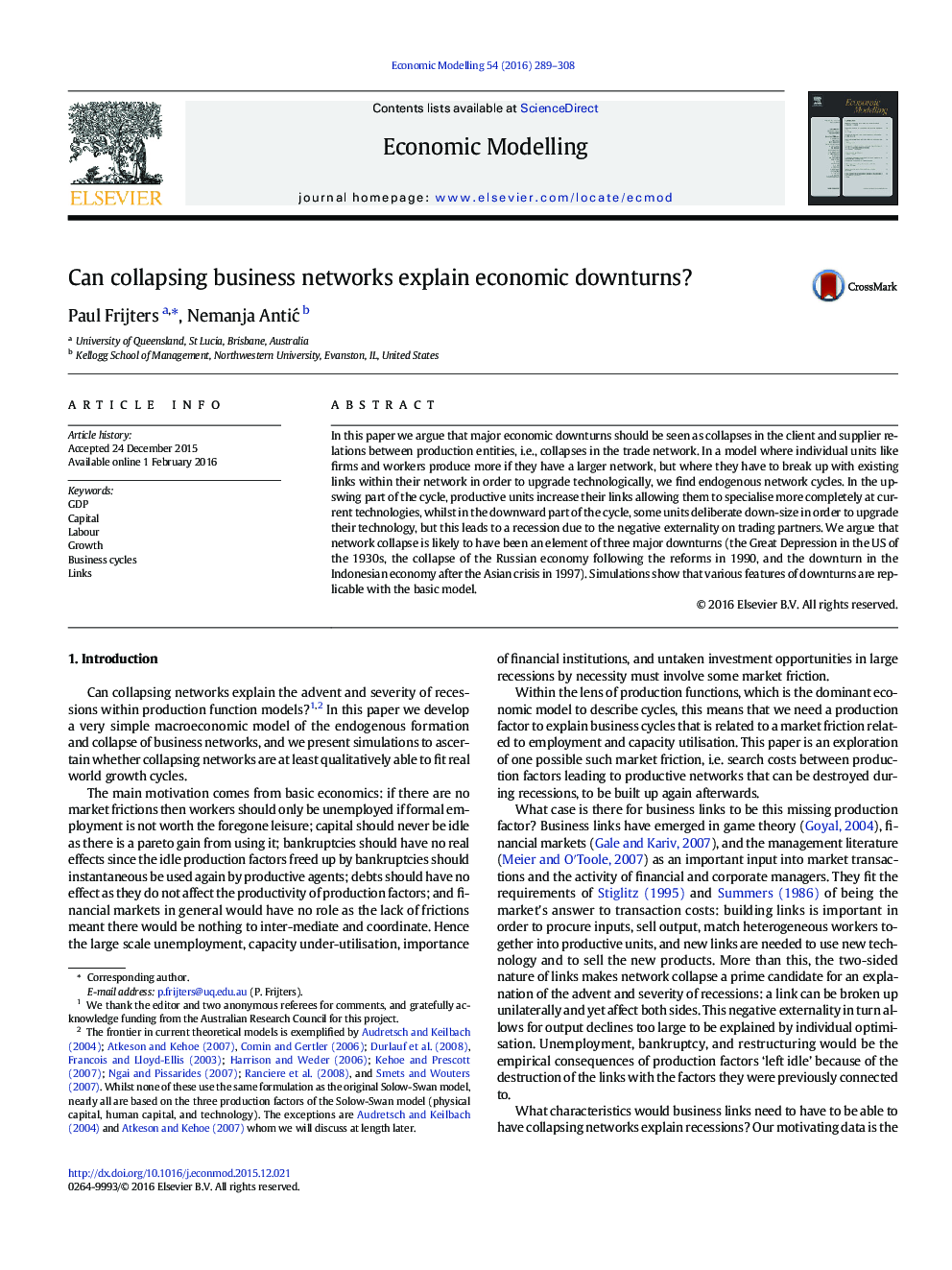| Article ID | Journal | Published Year | Pages | File Type |
|---|---|---|---|---|
| 5053392 | Economic Modelling | 2016 | 20 Pages |
â¢A new analytically tractable model that depicts business cycles as arising from transaction costs in finding trading partners.â¢Simulations wherein stylised aspects of business cycles fit wellâ¢Empirical support from capacity utilisation data, trade patterns, and under-employment literatureâ¢A work-horse model to link the collapse of financial intermediation during recessions with the real economy
In this paper we argue that major economic downturns should be seen as collapses in the client and supplier relations between production entities, i.e., collapses in the trade network. In a model where individual units like firms and workers produce more if they have a larger network, but where they have to break up with existing links within their network in order to upgrade technologically, we find endogenous network cycles. In the up-swing part of the cycle, productive units increase their links allowing them to specialise more completely at current technologies, whilst in the downward part of the cycle, some units deliberate down-size in order to upgrade their technology, but this leads to a recession due to the negative externality on trading partners. We argue that network collapse is likely to have been an element of three major downturns (the Great Depression in the US of the 1930s, the collapse of the Russian economy following the reforms in 1990, and the downturn in the Indonesian economy after the Asian crisis in 1997). Simulations show that various features of downturns are replicable with the basic model.
